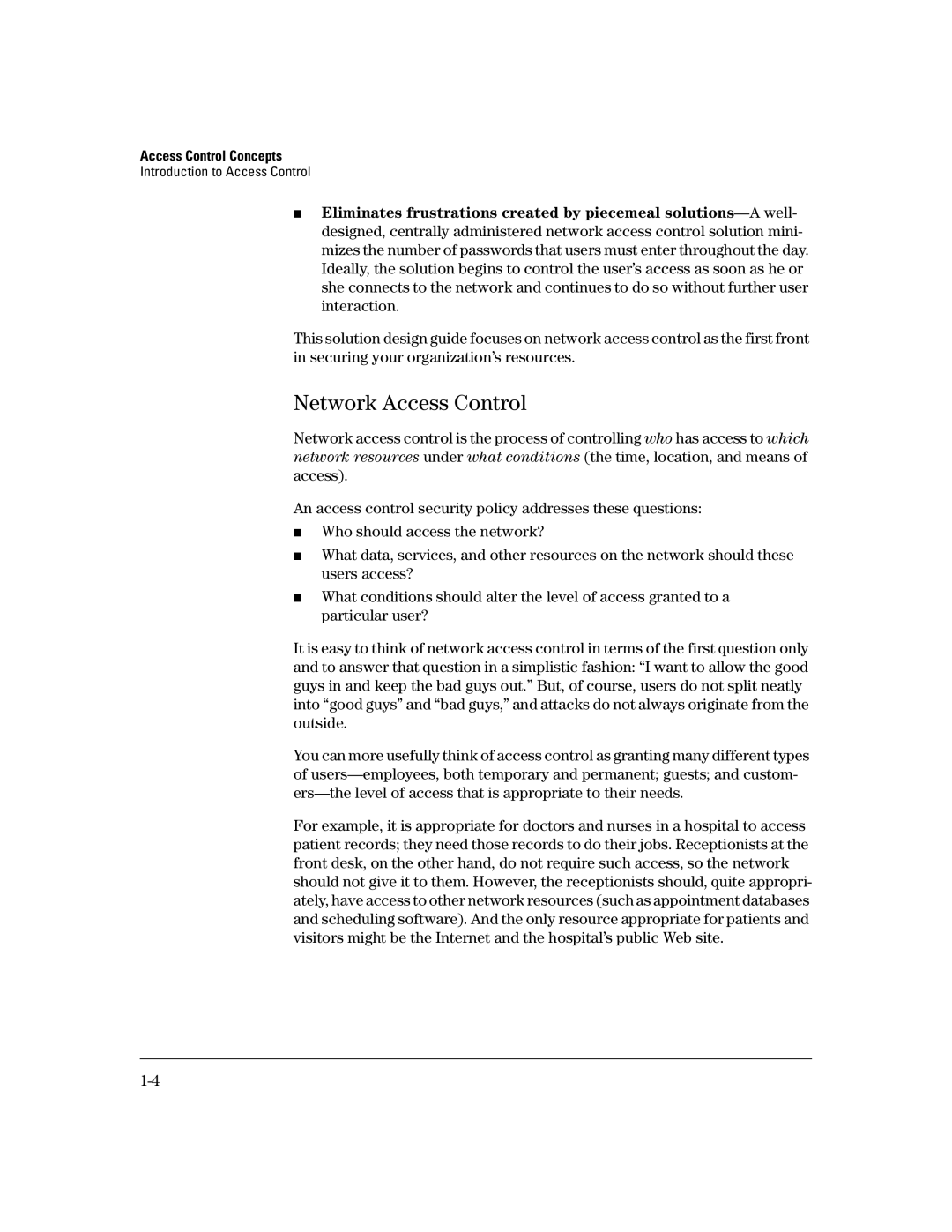Access Control Concepts
Introduction to Access Control
■Eliminates frustrations created by piecemeal
This solution design guide focuses on network access control as the first front in securing your organization’s resources.
Network Access Control
Network access control is the process of controlling who has access to which network resources under what conditions (the time, location, and means of access).
An access control security policy addresses these questions:
■Who should access the network?
■What data, services, and other resources on the network should these users access?
■What conditions should alter the level of access granted to a particular user?
It is easy to think of network access control in terms of the first question only and to answer that question in a simplistic fashion: “I want to allow the good guys in and keep the bad guys out.” But, of course, users do not split neatly into “good guys” and “bad guys,” and attacks do not always originate from the outside.
You can more usefully think of access control as granting many different types of
For example, it is appropriate for doctors and nurses in a hospital to access patient records; they need those records to do their jobs. Receptionists at the front desk, on the other hand, do not require such access, so the network should not give it to them. However, the receptionists should, quite appropri- ately, have access to other network resources (such as appointment databases and scheduling software). And the only resource appropriate for patients and visitors might be the Internet and the hospital’s public Web site.
